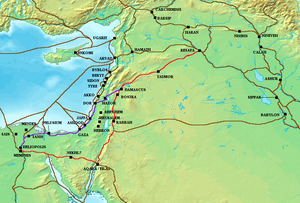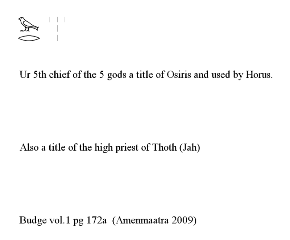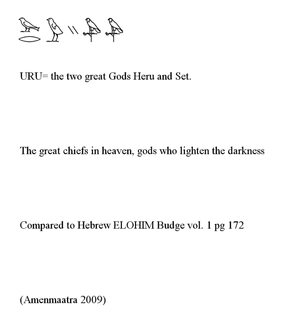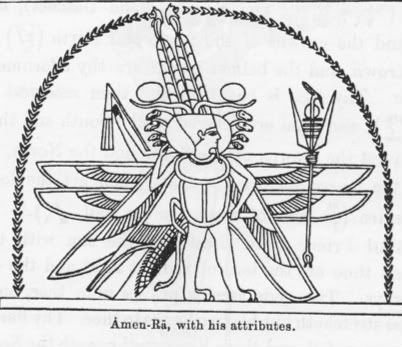
When Thutmose III battled in the Mesopotamia he brought down with him into Egypt many royal peoples from that area, and seems to have married at least one of them via the Amarna letters. It is a good chance that Akhenaten's great grandfather had this blood line running through his veins. The Amarna letters a great source of info seems to point out this truth, for they point out that King Kadasman-Enlil I (1364-1350) of Babylonia was either a Fraternal or Blood brother of Akhenaten's father Amenophis III; and that Tusratta king of Mittani was father in law of Amenophis IV better known as Akhenaten (EA 7 & EA 29). So by the time of Akhenaton the royal Egyptian blood line was a blend of cultures from the whole of the Ancient Levant. Most of the correspondance between Egypt and the rest of the Levant were signed from your Brother, impling the blood relation. Of course this blood connections created massive resentment and became a hardship for the Egyptian royality serving as goveners during the Amarna period.
By Rameses III, Egypt had 9 holy temples in Palestine, and Syria in honor of the King of the Gods Amen Ra. This historic fact comes to us via the Harris Papyrus, the biggest papyrus found so far. Some of the cities were Beth-Shan, Ashkelon, Joppa, Gaza, Megiddo, and Timna. It has also been theorized since there has never been any evidence for King Solomon, that the first Temple in Israel was built by the Temple of Amen Ra. There is some evidence in the name of Jerusalem. If one looks at the latin spelling of Jerusalam one would see Herusalem. Heru was the real name of Horus, son of Osiris. Another connection is that the ancient city of Jerusalem was called Urusalem, Uru or Ur is also another name for Horus. Either way Jerusalem is half Egyptian in origin due to it's name.


Another thought that comes in peoples heads is that Ur is purely Mesopotamian in origin, but there was also a Babylon in Egypt. Just out side of Cairo Egypt is a place called fort Babylon. Most people know little about the Fort of Babylon, though certainly the Christians do, because several of their oldest churches are built into or on its walls. Some say that "Babylon, is derived from a corruption of the ancient Egyptian per-hapi-n-On, which means the House of the Nile of On, which was what the earlier Egyptians called Roda Island."
Link to Fort Babylon Egypt
Every year the Temple of Amen Ra would honor the shepherd, king of the dead, Prophet of Amen Ra, Osiris in a Hajj or pigramage from Abydos Egypt to Byblos Syria. This was one of the reasons for needing 9 temples in Palestine and Syria, the other reason was obviously wealth. "Every year a head of papyrus, thrown into the sea at some unknown point of the delta, was carried for six long days along the Syrain coast, buffeted by winds and waves, and on the seventh day was thrown up at Bablos, where the priest recieved it and exibited it solemnly to the people." This holy Hajj linked the Holy Lands inherently with Dynastic Egypt.

Le Papyrus Harris I (BM 9999).(Review) (book review) (book review): An article from: The Journal of the American Oriental Society


No comments:
Post a Comment